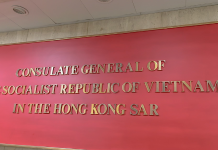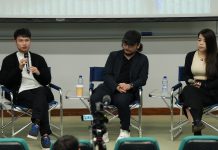Waters’ cheongsams exude quality, luxury, elegance and beauty. But for Helius Yuen, the magic of the cheongsam is the glamour they can bring to even the most modest of wearers and backdrops. He recalls he first became aware of their mysterious power when he was 11 and came across a photo of his grandmother wearing a cheongsam. He was impressed by the splendour of the picture.
“I asked [my grandmother]: Who is this star?” Yuen says.
When he found out “the star” was actually his grandmother, he was amazed by how the cheongsam could make such a transformation. It was then that he started looking up information in the library and learning about the history of the cheongsam.
Although the cheongsam is seen as the quintessential Chinese garment, it was actually introduced to China by the Manchus during the Qing dynasty. The original garments were loose and baggy and were worn by Banner people (the name given to the tribes under the Manchu military system) or Qi ren. This is why they are called “qipao” in Mandarin. Over time, the garments became more form fitting.
Originally in Chinese, “cheongsam” referred to the men’s garment only. The traditional dress women wear was called “qipao”. But when the designed was brought to the English-speaking world, people used both words to refer to the women’s wear.
They became fashion items for Han Chinese women in the early 20th century and were influenced by western fashions, leading to the modern version which was developed in Shanghai in the 1920s.
When refugees from Shanghai came to Hong Kong after the revolution, they brought their fashions with them. Gloria Wong Zing-yi, assistant professor from the Institute of Textile and Clothing at the Hong Kong Polytechnic University says cheongsams became popular in Hong Kong in the 1960s.
Wong explains that during that time, only the affluent could afford to wear the cheongsam. The vast majority of the people did not have the time or the money to wear them, except for special occasions. Back in those days, the cheongsam was a garment that had much value and significance.
While some may find it rather unusual to collect cheongsams, Wong, like many other cheongsam designers, appreciates both Waters’ and Yuen’s passion.
Choi Wing-yin, a fashion design lecturer from the Institute of Textile and Clothing at the Hong Kong Polytechnic University, says it is not easy to be a collector in Hong Kong, “Some Chinese are afraid that the things collected will have spirits living in them. There are lots of taboos.”
Besides superstitions, Yuen has also encountered prejudice.






































